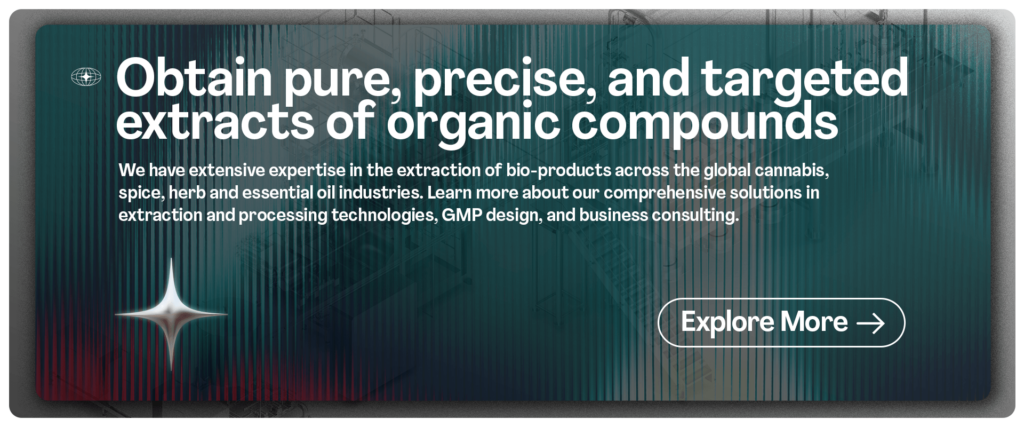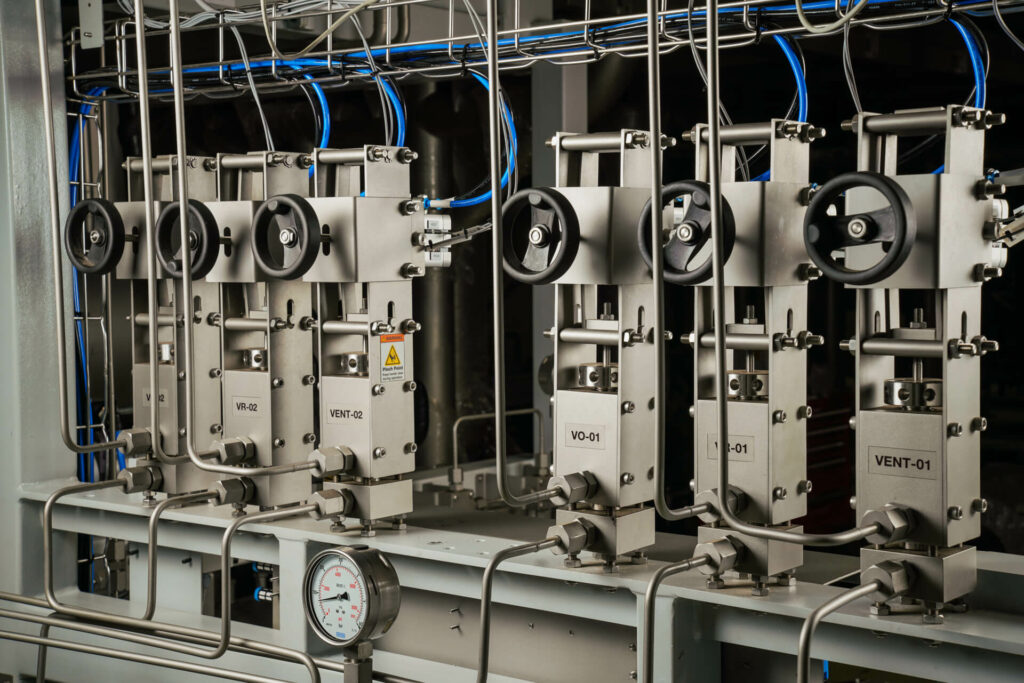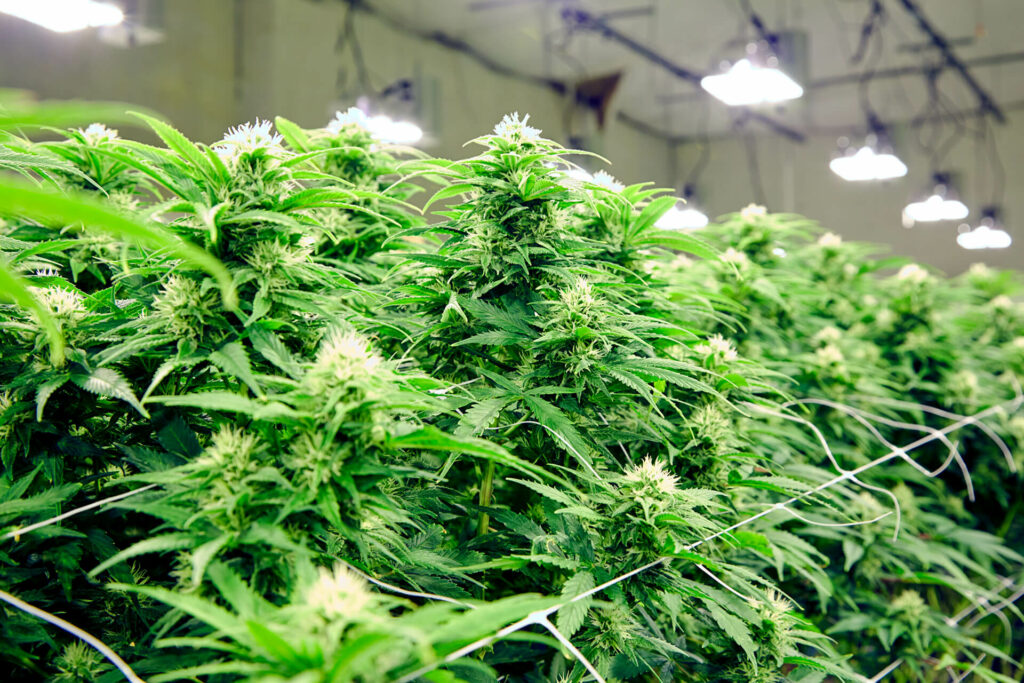Understanding the Principles of Supercritical Extraction
Pharmaceuticals, cosmetics, food, essential oils . . . all industries have some application for supercritical fluid extraction. This innovative technology offers a safer, more efficient, and environmentally friendly method of extracting essential compounds from diverse raw materials.
Supercritical fluids are in a unique state in that they possess the properties of both liquids and gases. These distinctive features allow supercritical fluids such as CO2,to exhibit remarkable solvent properties, making them efficient carriers for extracting target compounds from a variety of substances. Of particular note is their capacity to dissolve certain compounds from the raw material at certain pressures.
The principles of supercritical fluid extraction process are based on the unique properties of supercritical fluids.
Supercritical CO2 extraction process represents a revolutionary advancement in the field of extraction process, harnessing the properties of supercritical fluids to obtain valuable compounds from a wide range of raw materials. The principles of supercritical extraction are based on the unique properties of supercritical fluids. In this article, let us delve into the principles of supercritical extraction:

-
- Supercritical State: A substance becomes supercritical when it is heated above its critical temperature and pressurized beyond its critical pressure. At this point, the distinction between gas and liquid phases disappears, and the fluid exhibits unique properties. It has the density of a liquid and the diffusivity that of a gas. These properties allow the supercritical fluid to penetrate solid matrices easily, making it an excellent solvent for extracting compounds from various materials.
-
- Critical Temperature and Pressure: The critical temperature (TC) is the temperature at which a substance transitions from a liquid to a supercritical fluid regardless of pressure. The critical pressure (PC) is the minimum pressure required to maintain a substance in its liquid state at its critical temperature. By choosing appropriate combinations of temperature and pressure, the solvent’s solvating power can be adjusted to optimize the extraction of specific compounds from the target material.
-
- Density of the Supercritical Fluid: The density of a supercritical fluid is higher than that of a gas but lower than that of a liquid. This unique density provides the supercritical fluid with a higher solvating power than conventional gas-phase solvents. The ability to fine-tune the density through adjustments in pressure and temperature is crucial for achieving selective extraction and efficient solvation of the target compounds. This behaviour of the supercritical fluids helps us to selectively extract certain components from raw materials in their purer form and a better quality.
-
- Selective Extraction:One of the key advantages is pressure and temperature control to extract selectively. By adjusting these parameters, the required compounds are extracted while leaving the others behind. This is particularly useful when the target compounds are sensitive to high temperatures or when the extraction of specific components is desired without extracting unwanted impurities. The ability to control selectivity enhances the purity and quality of the extracted compounds.
-
- Environmentally Friendly: Supercritical co2 extraction is considered environmentally friendly for several reasons. First, supercritical fluids such as carbon dioxide or CO2are non-toxic and non-flammable, minimizing risks to both operator and the environment. Additionally, since CO2 is not considered a volatile organic compound (VOC), its use in extraction processes helps in reducing air pollution and compliance with environmental regulations. And, CO2 becomes a greenhouse gas (GHG) only when released in the environment. Not when it is recirculated and / or processed as it is in SCFE extraction equipment.
-
- Reduced Thermal Degradation: Traditional extraction methods, such as steam distillation or solvent extraction, often involve high temperatures, which can lead to the degradation of thermally sensitive compounds. In supercritical extraction, the operating temperature is generally lower, reducing the risks of thermal degradation. This ensures the preservation of the target compounds’ integrity. This is particularly advantageous when extracting natural products with heat-sensitive compounds.
-
- Rapid Extraction: Supercritical extraction is a fast process due to the high diffusivity of supercritical fluids. The supercritical solvent can penetrate the solid material quickly and dissolve the target compounds efficiently. Such rapid extraction rate increases the productivity of the extraction process and reduces the overall processing time, making it suitable for large-scale industrial applications.
-
- Solvent Recovery: After the extraction process is completed, the pressure is reduced, causing the supercritical fluid to revert to its gaseous phase. The extracted compounds are left behind in concentrated form. The solvent can then be easily recovered by simple depressurization and recycled for future extractions. This feature significantly reduces the consumption of solvents, making the process more economically viable and environmentally sustainable compared to traditional solvent-based extraction methods that often require large quantities of organic solvents.
In Conclusion
Supercritical extraction is a cutting-edge technology with numerous applications and benefits across various industries. One of the key advantages of supercritical extraction lies in its gentle operating conditions. The use of low temperatures ensures the preservation of heat-sensitive compounds, making it an ideal method for applications such as essential oil production. Unlike traditional extraction methods that rely on high temperatures or chemical solvents, supercritical fluid extraction maintains the integrity of fragile compounds, resulting in superior products. From pharmaceuticals and food production to environmental remediation, this process continues to revolutionize the way we extract valuable compounds, ensuring safer, purer, and more effective end products. Overall, the principles of supercritical extraction make it a versatile and efficient method for obtaining high-quality extracts from various raw materials, and its applications continue to expand across different industries. Researchers and engineers are continually exploring ways to optimize the process and develop new applications for supercritical extraction technology.
ALSO, YOU CAN READ OUR NEW UPDATES
Check Out These Types of Cannabis Oil Extraction Equipment Before You Select Yours What is the Significance of Cannabis Oil Extraction Equipment? Here’s a Comprehensive Guide on Spice Oil Extraction that You Must Check Out CO2 Extraction for Cosmetics: What is the Role of CO2 Extracts? What Are The Methods Applied For The Process Of Essential Oil Extraction From Spices? Medicinal Cannabis: What Are Its Benefits To Be Expected In Health Care? How To Choose Cannabis Business Consulting Services? You Have To Keep These Pointers In Mind. How To Choose CBD Oil Extraction Equipment? Here Are Tips You Should Follow. What is Cryogenic Ethanol Extraction? What are the benefits of the process? What are the mistakes to avoid while setting up a Cannabis Extraction Business?



